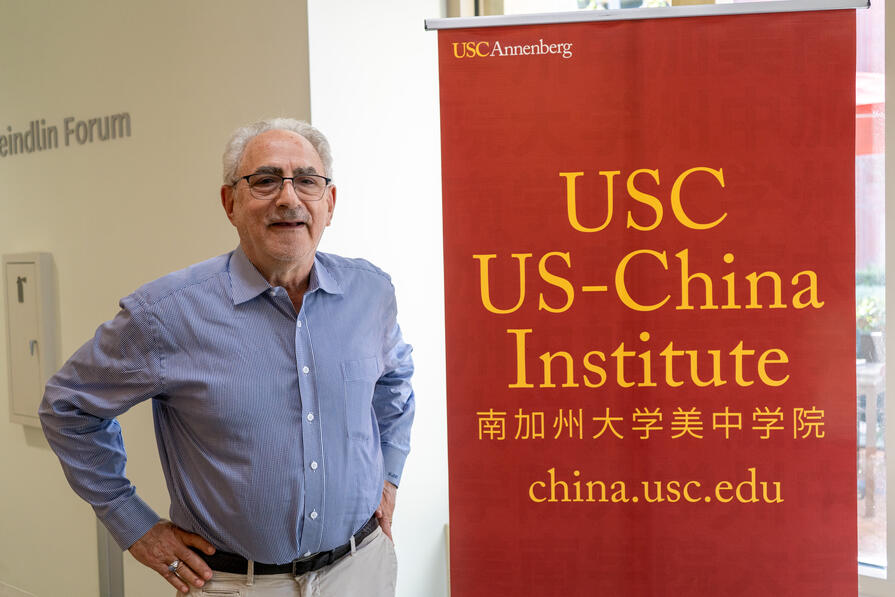Originally published by USC Keck School of Medicine.
Using the 2008 Beijing Olympics as their laboratory, University of Southern California (USC) researchers and colleagues have found biological evidence that even a short-term reduction in air pollution exposure improves one’s
The results of their study appear this week in the Journal of the American Medical Association, the most widely circulated medical journal in the world. “We believe this is the first major study to clearly demonstrate that changes in air pollution exposure affect cardiovascular disease mechanisms in healthy, young people,” said Junfeng (Jim) Zhang, Ph.D., the study’s senior author and professor of environmental and global health at the Keck School of Medicine of USC.
“We believe this is the first major study to clearly demonstrate that changes in air pollution exposure affect cardiovascular disease mechanisms in healthy, young people,” said Junfeng (Jim) Zhang, Ph.D., the study’s senior author and professor of environmental and global health at the Keck School of Medicine of USC.
Beijing, plagued by chronic air pollution, was awarded the 2008 Summer Olympics after promising to improve air quality for the duration of the event. Spending $17 billion on environmental cleanup, the government shut down factories and limited automobile traffic from July 20 to Sept. 17 to encompass the entire Olympic (Aug. 8-24) and Paralympic (Sept. 6-17) games. Pollution control measures relaxed after the Paralympics.
“Beijing is one of the most polluted cities in the world, and the Chinese government had proposed to reduce pollution levels to be comparable to other Olympic host cities,” Zhang said. “We wanted to take advantage of such a huge intervention and look at what happens to people biologically.”
Zhang’s team, which included scientists from the University of Rochester, University of Medicine and
The researchers examined biomarkers for systemic inflammation and blood clotting, as well as heart rate and blood pressure. During the Olympics, they observed statistically significant reductions in Von Willebrand factor and soluble CD62P levels, both of which are associated with blood coagulation, among the study participants. Soluble CD62P and systolic blood pressure levels also increased significantly after the Olympics. These changes indicate that exposure to higher air pollution levels are associated with an increased risk for cardiovascular problems. Changes among other measured indicators that support this association were also observed, although not statistically significant.
“Changes in cardiovascular physiology and inflammation contribute to the instability of atherosclerotic plaques, which can lead to a heart attack or stroke if ruptured,” Zhang said. “The changes in Von Willebrand factor and soluble CD62P are consistent with their roles in rapid thrombotic response.”
Each biomarker observed in the study has been related to cardiovascular morbidity or mortality in clinical studies, but few studies have considered how the environment affects the markers. In fact, it is only recently that population studies have linked air pollution exposure to risk for cardiovascular disease, according to Jonathan Samet, M.D., professor and Flora L. Thornton Chair of the Keck School’s Department of Preventive Medicine. This new study offers important evidence that air pollution exposure harms the health of the public, adds Samet, chairman of the Environmental Protection Agency’s Clean Air Scientific Advisory Committee.
“This study shows how air pollution exposure may act to increase cardiovascular disease risk, supporting the more general findings on air pollution and this very important group of diseases,” said Samet, who also is director of the USC Institute for Global Health. “We need to remember that large numbers of people in cities around the world are still exposed to high levels of air pollution as they are in Beijing.”
The study underscores the fact that people’s health and the environment are indelibly linked, says Caroline Dilworth, Ph.D., program administrator from the National Institute of Environmental Health Sciences (NIEHS), which provided funding for the study.
“When air pollution levels are lowered, the health benefits can be immediate,” Dilworth said.
Other USC co-authors include post-doctoral research associate Jicheng Gong, Ph.D., and Duncan Thomas, Ph.D., a professor of preventive medicine. The study was jointly funded by the NIEHS (1R01ES015864, P30ES005022, 5P30ES007048), Health Effects Institute, Beijing Municipal Bureau of Environment Protection and Beijing Council of Science and Technology.
Related articles:



